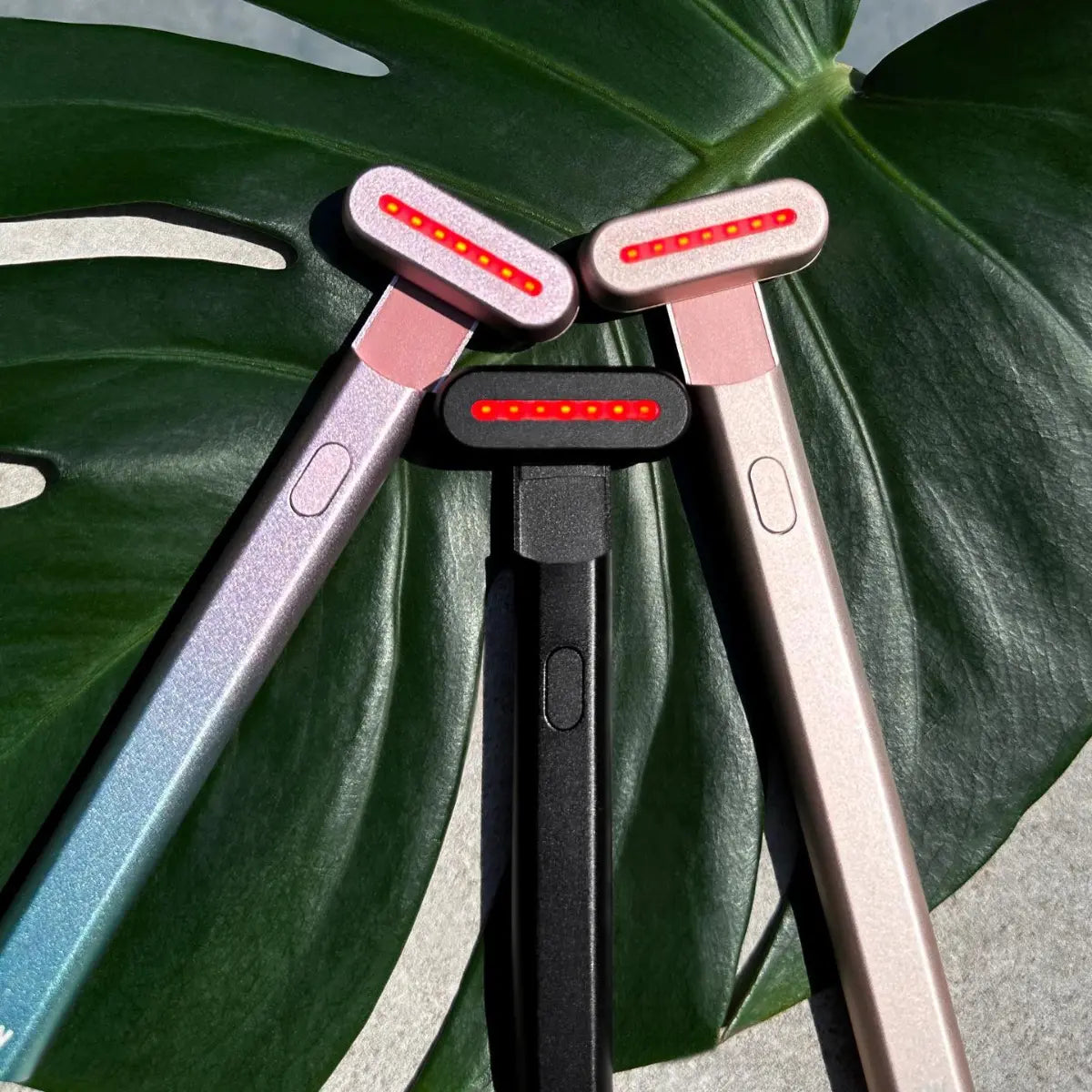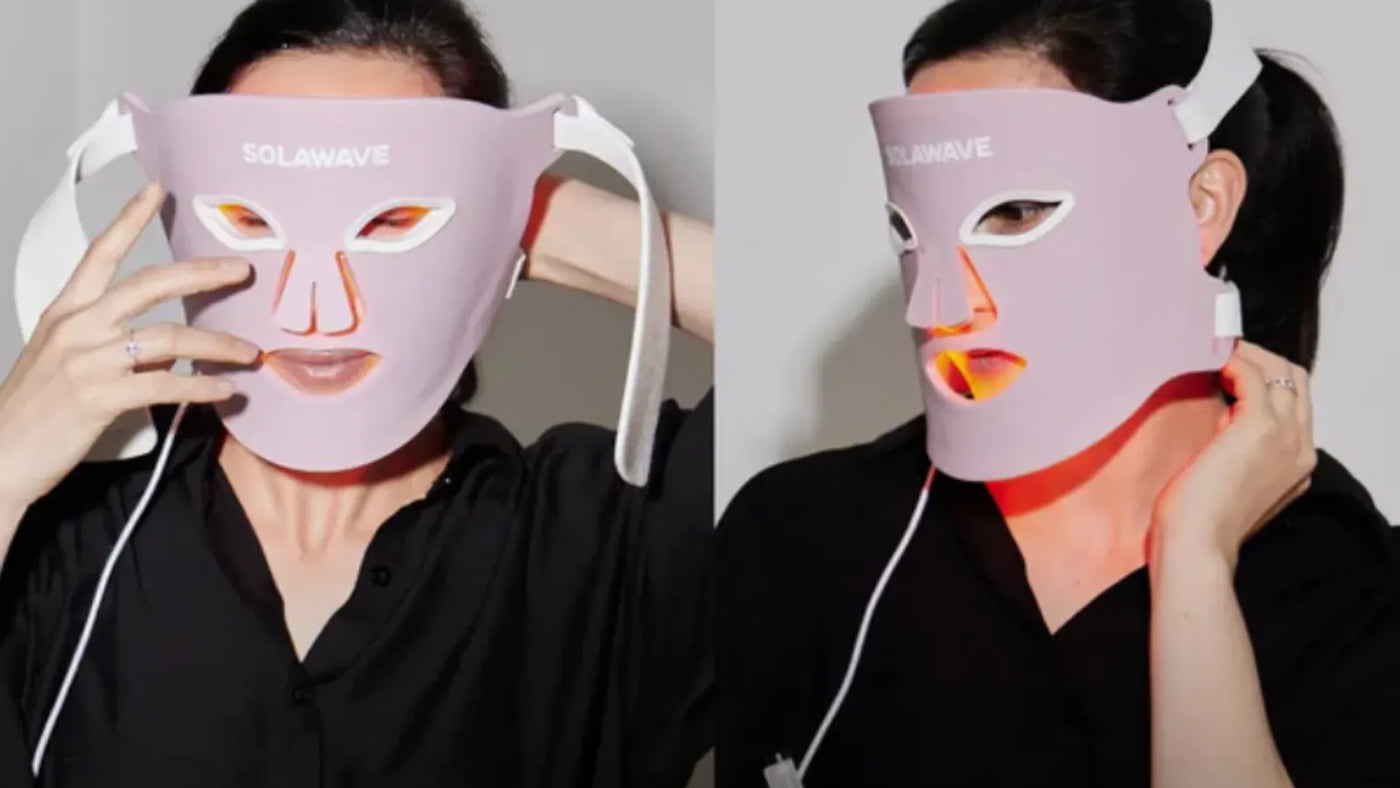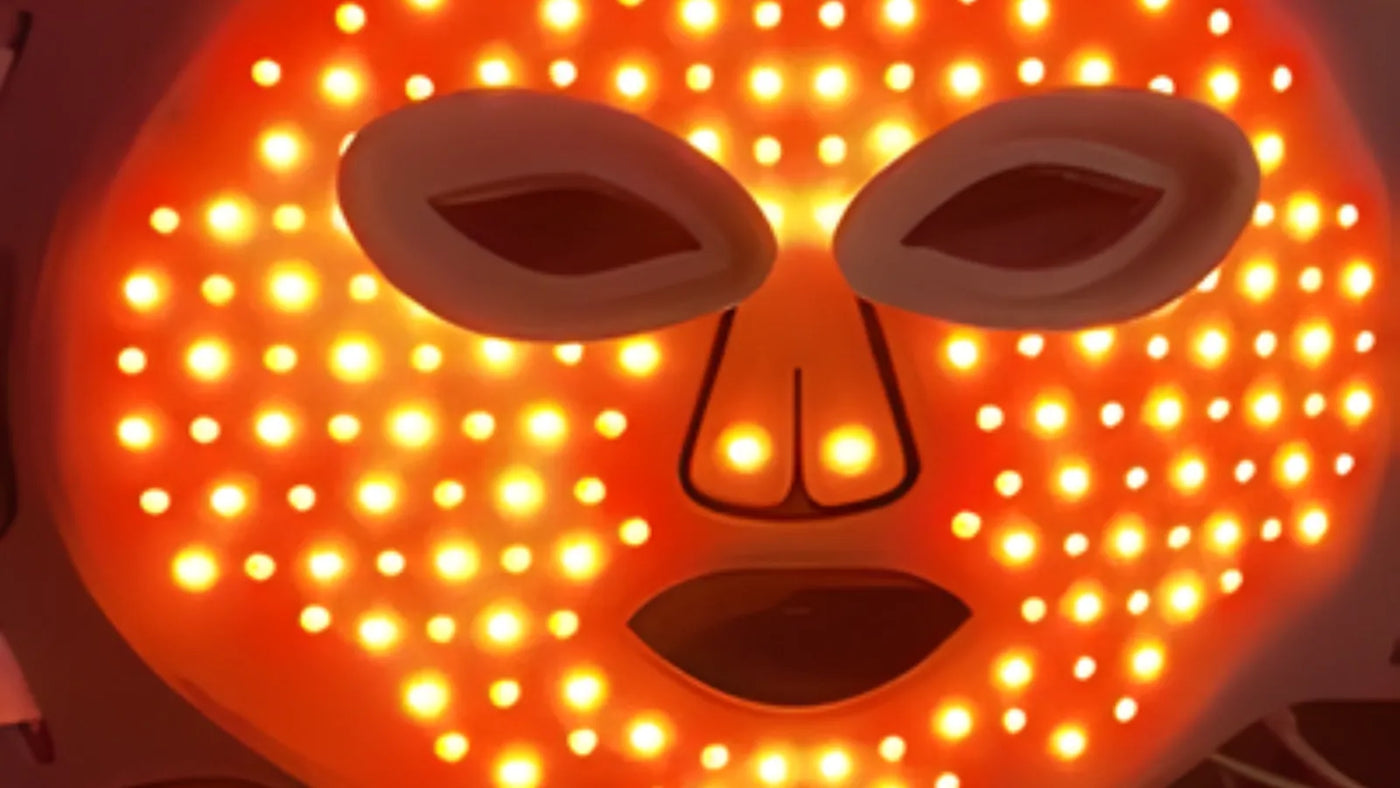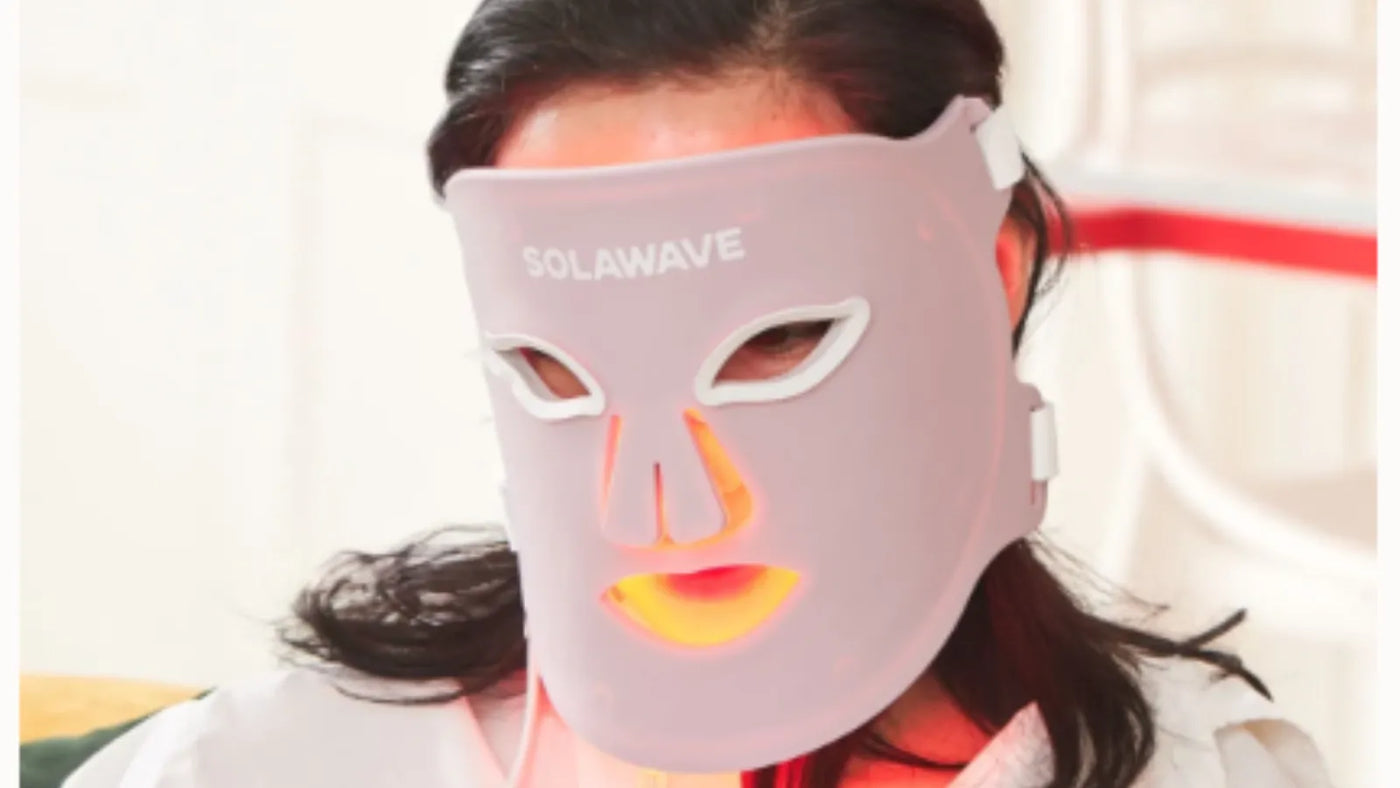

BLOG / Red Light Therapy
/ Frown Lines, Explained
Frown Lines, Explained
John Tsenekos
June 13, 2023
10 MINS READ
Frown lines, often regarded as an inevitable sign of aging, can become a cause for concern when they make us look older than we feel. The good news is that there are ways to prevent and treat these unwelcome facial lines. In this comprehensive guide, we'll explore what frown lines are, what causes them, and various prevention and treatment options available, including red light therapy.

What Are Frown Lines?
Frown lines, often referred to as expression lines, are a common sign of aging and manifest as wrinkles and creases on the face. Primarily appearing between the eyebrows or across the forehead, they can significantly impact one's facial appearance. These lines are not only a result of aging but also frequent facial movements. They can be categorized into two distinct types: dynamic and static. Dynamic frown lines are directly linked to facial expressions and appear temporarily when muscles are used to express emotions such as sadness or concentration. For example, squinting under bright light or frowning during stressful moments can temporarily deepen these lines.
Static frown lines are those that remain etched on the face even when it is at rest, reflecting the permanent imprint of repeated facial expressions. Unlike dynamic lines that may appear and disappear, static lines are always visible, marking the skin with creases that reflect past expressions. This permanence can make them more challenging to treat and often requires interventions beyond simple skincare routines.
Causes of Frown Lines
Aging and Skin Elasticity
As individuals grow older, their skin's ability to maintain its tightness and smooth texture diminishes, often leading to the development of wrinkles and fine lines. This natural decline in skin elasticity can be primarily attributed to the reduced production of collagen and elastin, which are vital proteins that help the skin retain its shape and firmness. These proteins are robust in young skin, providing a cushion against everyday movements and expressions. However, as we age, not only does the production of these proteins slow down, but their structural integrity also weakens. The skin becomes less able to snap back after being stretched, leading to permanent creases and a saggy appearance.
Facial Expressions and Muscular Activity
The repetitive motion of facial muscles, as seen through common expressions such as smiling, frowning, or squinting, plays a significant role in the formation of characteristic lines on the face. Each time we use facial muscles, they contract, pulling on the skin and eventually leading to the creation of temporary lines. Initially, these lines are only visible while the muscle is in use. However, as the skin ages and loses elasticity due to decreased collagen and elastin, these temporary grooves start to deepen and persist as static wrinkles. Over many years, these expression lines can become deeply ingrained, particularly around areas of high movement such as the forehead, eyes, and mouth. This effect is compounded by the natural thinning of the skin's epidermis and dermis layers, which makes it harder for the skin to smooth out after muscle relaxation.
Genetics and Environmental Factors
The role of genetics in skin aging is profound, with inherited traits dictating the resilience of one's skin to wrinkling and sagging as they age. These genetic factors determine the natural durability of collagen and elastin within the skin, as well as the body's capacity to repair and replace these critical proteins. Alongside genetic predispositions, external environmental factors significantly influence the rate at which skin aging occurs.
External factors significantly influence the rate at which our skin ages, impacting its appearance and structure. These factors contribute to biological changes that can accelerate the aging process beyond our genetic predispositions. Here's a look at how each factor plays a role:
- Sun Exposure: Extended exposure to the sun's ultraviolet (UV) rays can profoundly affect skin health. UV rays break down collagen and elastin fibers, the proteins responsible for keeping our skin firm and elastic. This degradation leads to increased skin laxity, wrinkles, and sagging. Protective measures like wearing sunscreen, seeking shade, and wearing protective clothing are essential to mitigate these effects and maintain the skin's youthful appearance.
- Lifestyle Choices: Lifestyle factors, including smoking and pollution exposure, contribute significantly to oxidative stress, a key process in skin aging. Smoking decreases oxygen flow and nutrient supply to the skin, while pollutants can trigger the release of free radicals that damage skin cells and collagen. This combination not only accelerates the appearance of wrinkles but also dulls the skin's overall complexion. Adopting a healthier lifestyle by quitting smoking and avoiding polluted environments can help preserve skin integrity.
- Diet: Nutrition plays a critical role in skin health. A diet lacking essential vitamins, antioxidants, and hydration can impair the skin’s ability to regenerate and protect itself against environmental damage. Key nutrients like vitamins C and E, omega-3 fatty acids, and adequate water intake are crucial for maintaining the skin’s moisture barrier and promoting cell renewal. A balanced diet rich in these nutrients can help delay the signs of skin aging by supporting overall skin health.
- Sleep Patterns: Sleep is fundamental for overall skin health and appearance. During sleep, the body goes into repair mode, regenerating skin cells, and restoring damage from environmental stressors. Lack of sleep can lead to increased signs of aging and stress on the skin, including dark circles, puffiness, and an overall dull appearance. Ensuring regular, restful sleep is vital for allowing the skin to recover and maintain its elasticity and youthful glow.
- Stress: Stress hormones like cortisol can weaken the skin’s ability to maintain moisture and elasticity, accelerating the aging process and contributing to the appearance of fine lines and wrinkles. Managing stress through techniques such as mindfulness, meditation, and regular exercise can help reduce its impact and promote healthier, more resilient skin.
Understanding and mitigating these external factors is essential for anyone looking to preserve their skin’s youthfulness and vitality. By adopting protective and healthy habits, you can significantly influence how your skin ages, complementing your genetic makeup.

How to Prevent Frown Lines
A consistent skincare routine plays a pivotal role in sustaining both the health and aesthetic appeal of your skin. Regular cleansing is the cornerstone of effective skincare, as it removes dirt, oil, and other environmental pollutants that can accumulate on the skin’s surface throughout the day. This daily practice helps prevent the build-up that can lead to acne and dullness, promoting a clearer and brighter complexion. Incorporating a gentle cleanser can help maintain the skin's natural balance, crucial for preventing over-drying or excessive oiliness, which are common causes of skin disturbances.
Exfoliation is another critical step in a comprehensive skincare regimen. It involves the removal of dead skin cells that can clog pores and lead to a lackluster appearance. By exfoliating regularly, whether through chemical peels, scrubs, or enzymatic products, you can enhance your skin’s regeneration process, allowing new, healthy cells to surface. This not only improves the skin’s texture and tone but also enhances the efficacy of other skincare products by allowing better absorption. It's important to choose an exfoliation method that suits your skin type to avoid irritation and maximize benefits.
Finally, moisturizing is vital to lock in hydration and nutrients after the cleansing and exfoliating stages. Moisturizers help to form a protective barrier over the skin, keeping it hydrated and preventing the environmental factors that contribute to aging and dryness. For enhanced results, look for moisturizers that contain antioxidants, such as vitamin E, or hyaluronic acid, which binds water to skin cells, ensuring deep and lasting hydration. Furthermore, for daytime routines, selecting a moisturizer with SPF can protect the skin from harmful UV rays, which are a leading cause of premature aging.
How to Treat Frown Lines
A variety of treatments, ranging from topical creams to cosmetic procedures and Red Light Therapy, can help reduce the appearance of frown lines. As one of the most significant steps on how to reduce wrinkles, determining the most appropriate treatment takes research. It depends on factors such as individual skin type, the severity of the lines, and personal preferences.
Topical Treatments
Topical treatments for frown lines are particularly effective when they include ingredients like retinoids, peptides, and antioxidants. Retinoids, which are derivatives of vitamin A, are widely celebrated for their ability to enhance collagen production and speed up cell turnover. This makes the skin more elastic and reduces the visibility of lines and wrinkles. Peptides, another key component, are short chains of amino acids that can penetrate the skin's upper layer to help rebuild and strengthen its underlying structures. They signal the skin to produce more collagen, thus firming the skin and reducing the depth of frown lines. Antioxidants play a crucial role by defending the skin against damage from free radicals and environmental pollutants. Together, these ingredients form a powerful alliance to not only diminish the appearance of existing frown lines but also to prevent new ones from forming, promoting a healthier, more resilient complexion.
Cosmetic Procedures
Botox and dermal fillers are effective cosmetic solutions utilized to combat the signs of aging and improve facial aesthetics. Each treatment offers unique benefits and mechanisms of action, catering to different aesthetic needs and preferences:
- Botox: This treatment targets the muscles responsible for frowning, which when relaxed, results in a reduction of visible frown lines. The effect of Botox injections leads to a smoother and more youthful facial appearance. Typically, the results last between three to four months, after which the muscle action gradually returns and the lines reappear, making repeat treatments necessary to maintain the desired aesthetic effect. Botox is favored for its non-invasive nature and its ability to deliver noticeable results without surgery.
- Dermal Fillers: Dermal fillers, such as those based on hyaluronic acid, are injected directly into areas with wrinkles or reduced volume to immediately restore fullness. These fillers plump up the skin from underneath, smoothing out lines and wrinkles, particularly around the mouth and nose, and enhancing the overall facial contours. The results of dermal fillers are visible almost instantly, providing a refreshed and rejuvenated appearance. However, like Botox, the effects are temporary, generally lasting from six months to a year depending on the type of filler used. To maintain the rejuvenated look, periodic touch-ups are required as the body gradually absorbs the injected material.
By choosing the appropriate treatment based on individual needs and the areas of the face to be enhanced, patients can achieve significant improvements in their appearance. Both Botox and dermal fillers are instrumental in the field of cosmetic dermatology, offering individuals non-surgical options for maintaining youthful skin and delaying the signs of aging.
Red Light Therapy
Known as a non-invasive treatment for frown lines, Red Light Therapy is making rounds in the skincare industry. This treatment involves the use of a red light therapy device or red light therapy wand that emits low-level red and near-infrared wavelengths of light. These wavelengths penetrate the skin, stimulating collagen production and cellular regeneration. Red light therapy at home using red light wands can be a convenient option for those looking to incorporate this treatment into their skincare routine. Research has shown that Red Light Therapy can effectively reduce frown lines without the side effects associated with other treatments.
At-Home Devices and Techniques
In addition to red light face wands, other at-home devices, such as microcurrent devices, can help treat frown lines. Microcurrent devices deliver low-level electrical currents to the skin, which helps tone and tighten facial muscles. A California-based skincare tech company named Solawave is considered the leader in Red Light Therapy. And they have a device, their 4-in-1 Skincare Wand, that features both Red Light Therapy and Microcurrent. They're famous for providing high-quality devices at reasonable prices.

Frown lines, though a natural part of aging, don't have to define our facial landscapes or dictate our expressions of youth and vitality. Preventing and addressing these lines effectively requires a holistic approach, blending skincare, healthy habits, and, when desired, professional treatments. Adopting a skincare regimen that includes ingredients scientifically proven to rejuvenate the skin can make a significant difference. Incorporating facial exercises into daily routines can also serve as a non-invasive way to diminish the impact of these expression lines. Innovative at-home technologies such as Red Light Therapy and microcurrent devices have democratized access to advanced skincare, enabling individuals to maintain youthful skin in the comfort of their homes. Ultimately, whether through prevention or intervention, managing frown lines is increasingly feasible, offering everyone the chance to reflect their inner youth and vitality outwardly, regardless of age.
Related articles
/






















